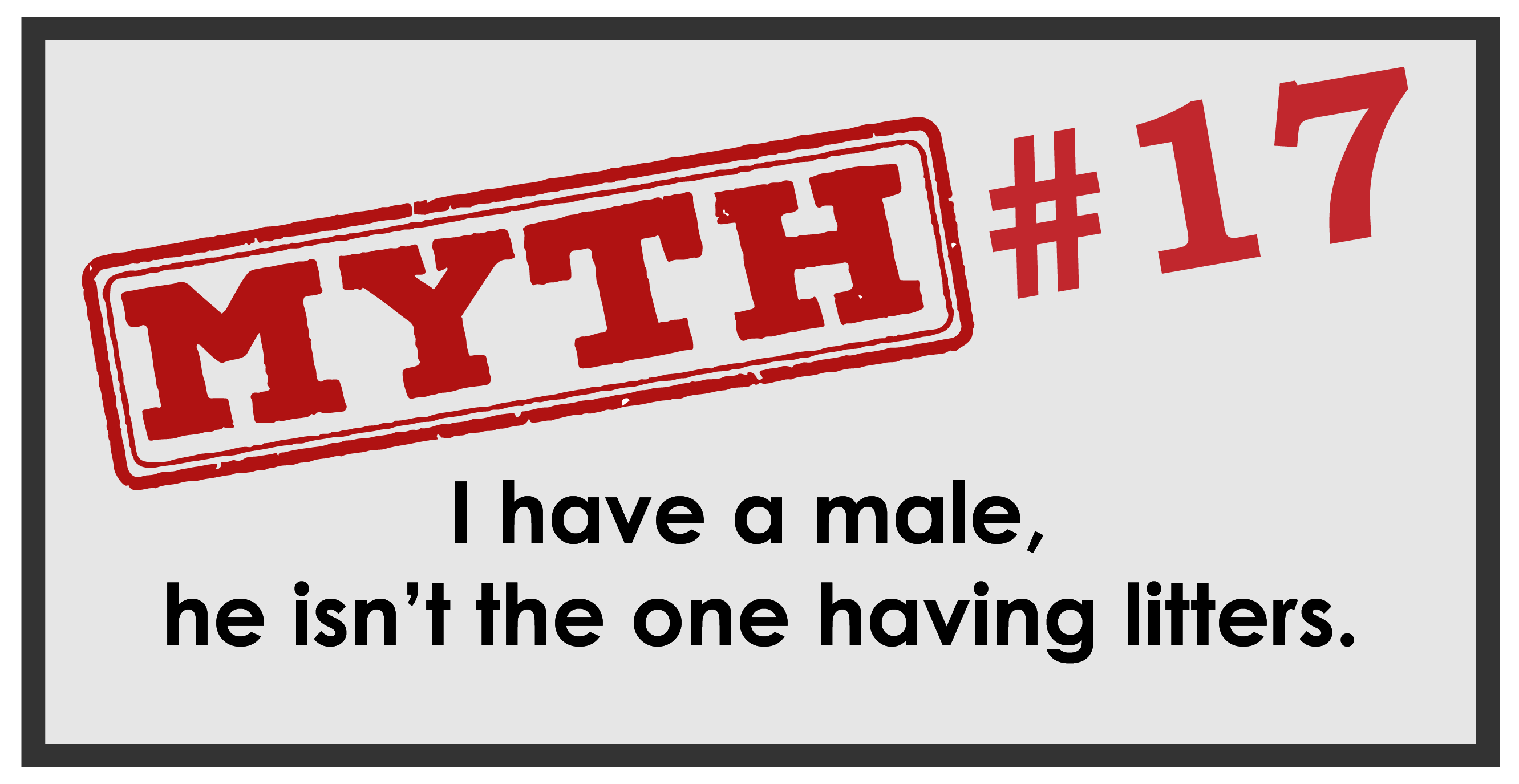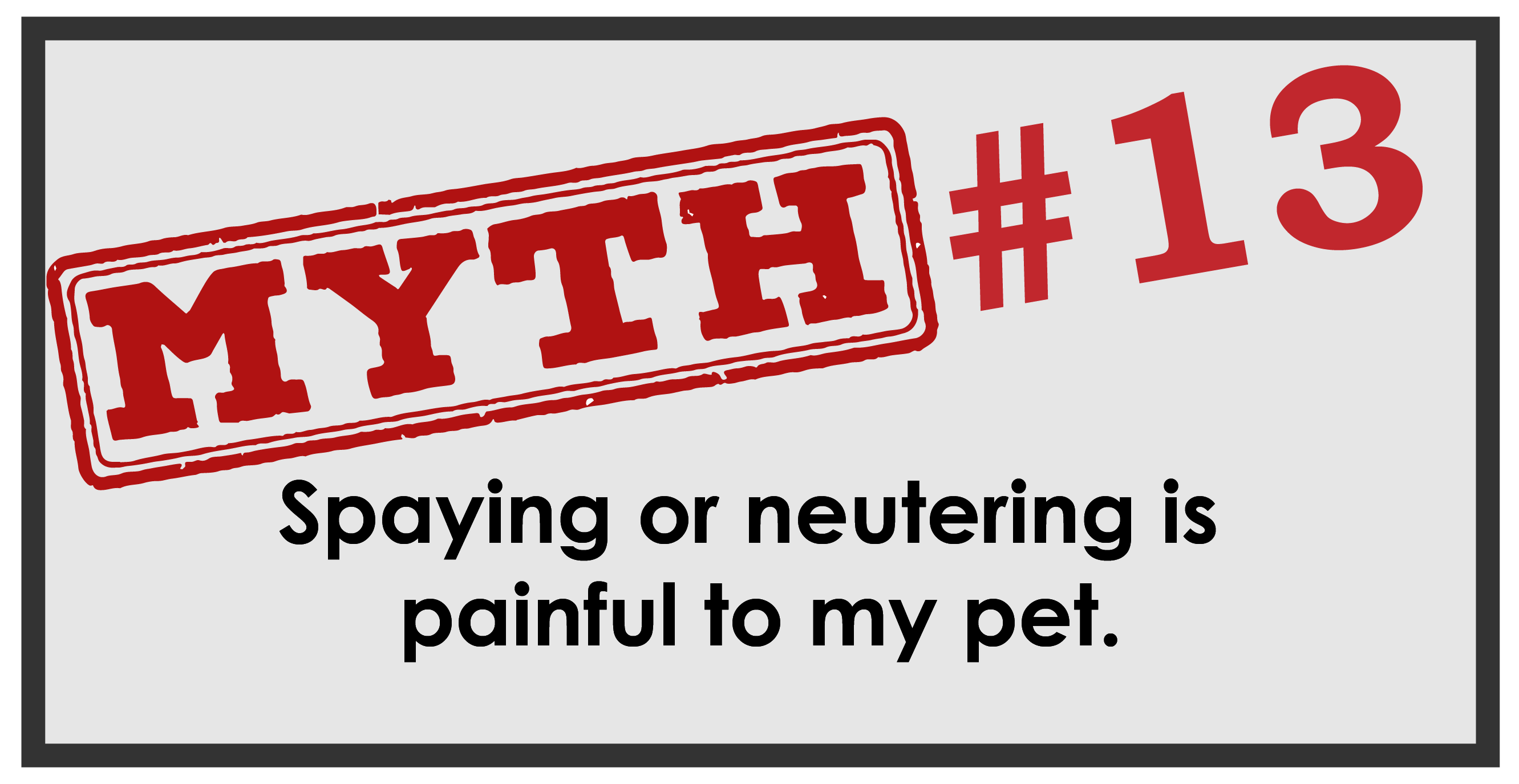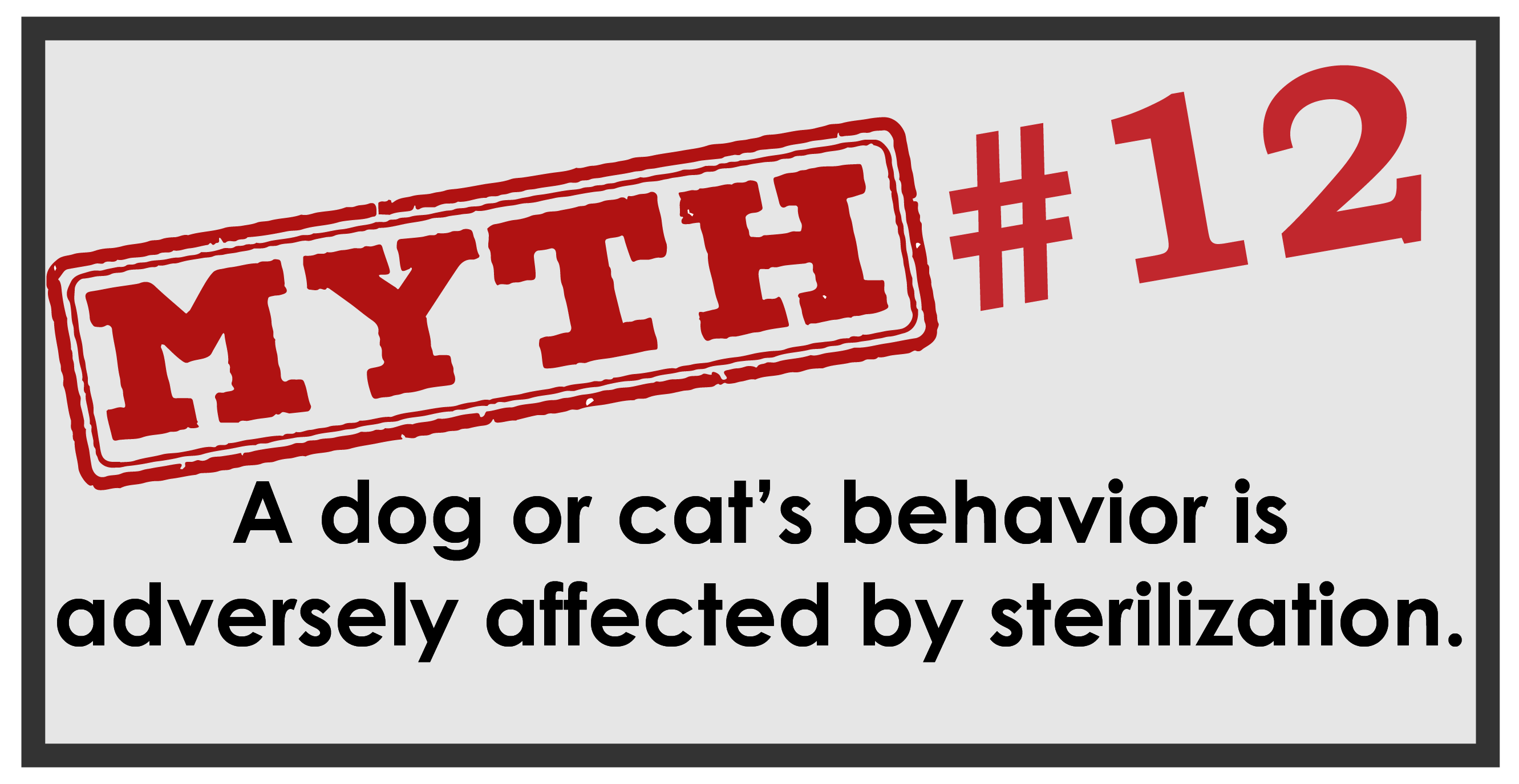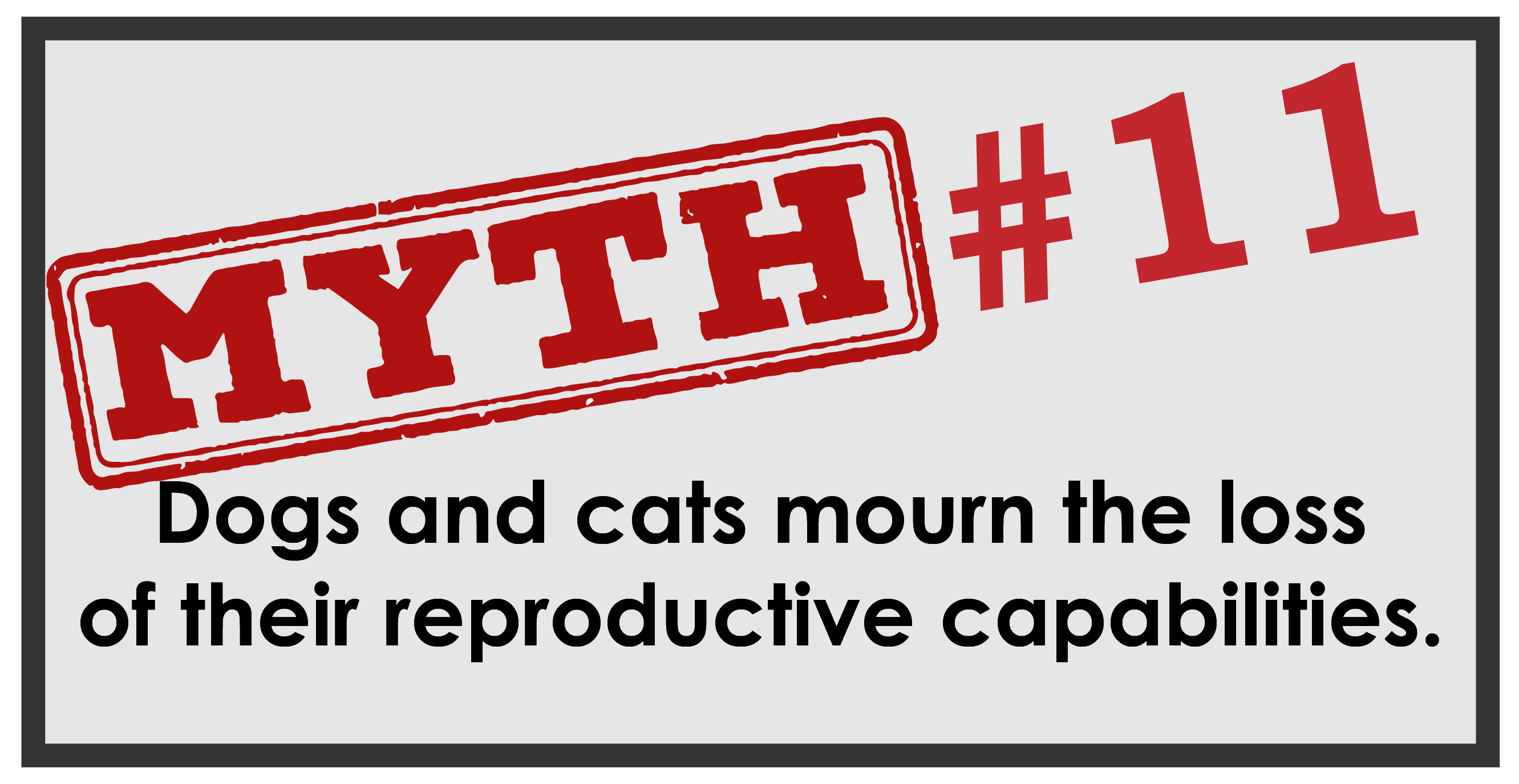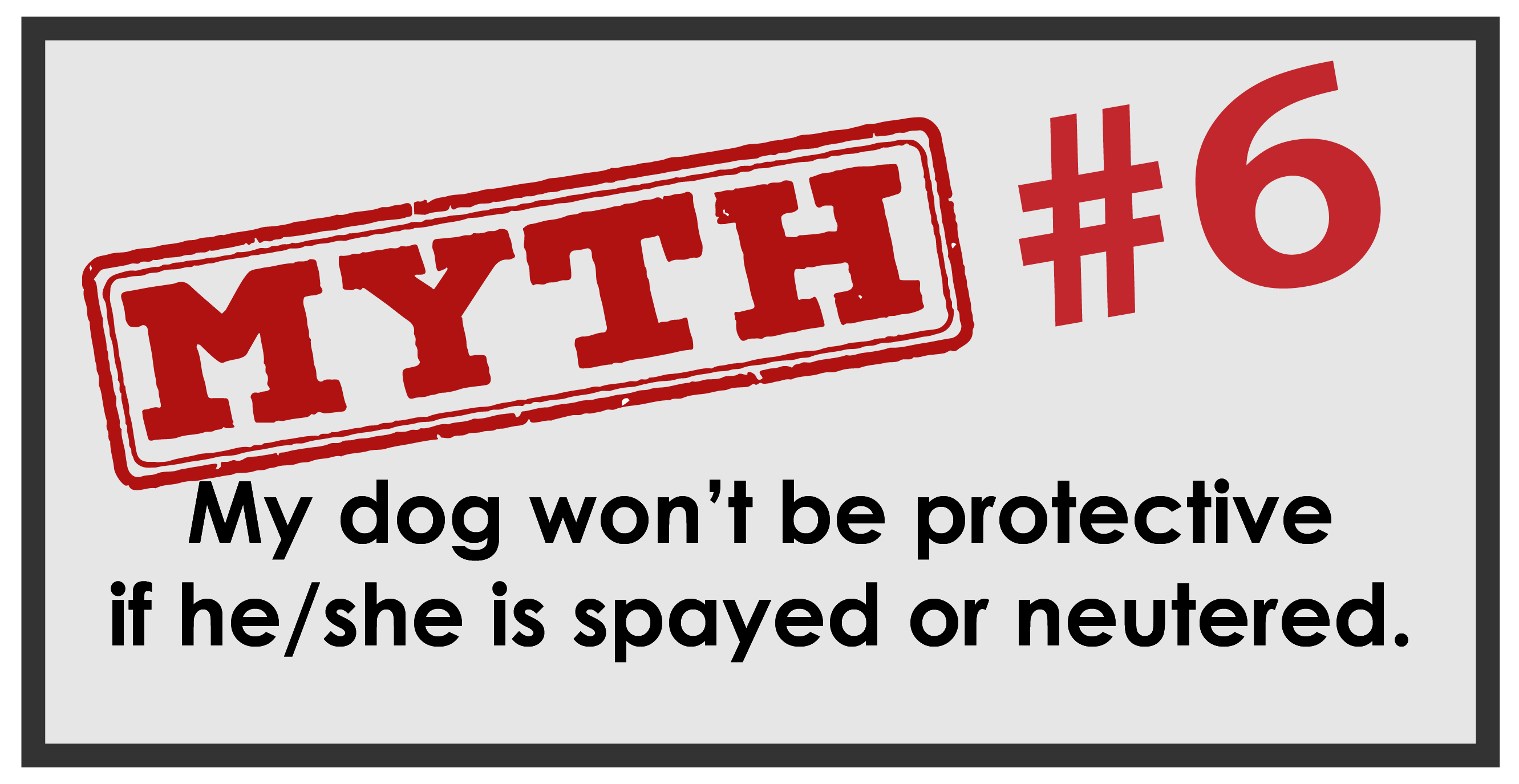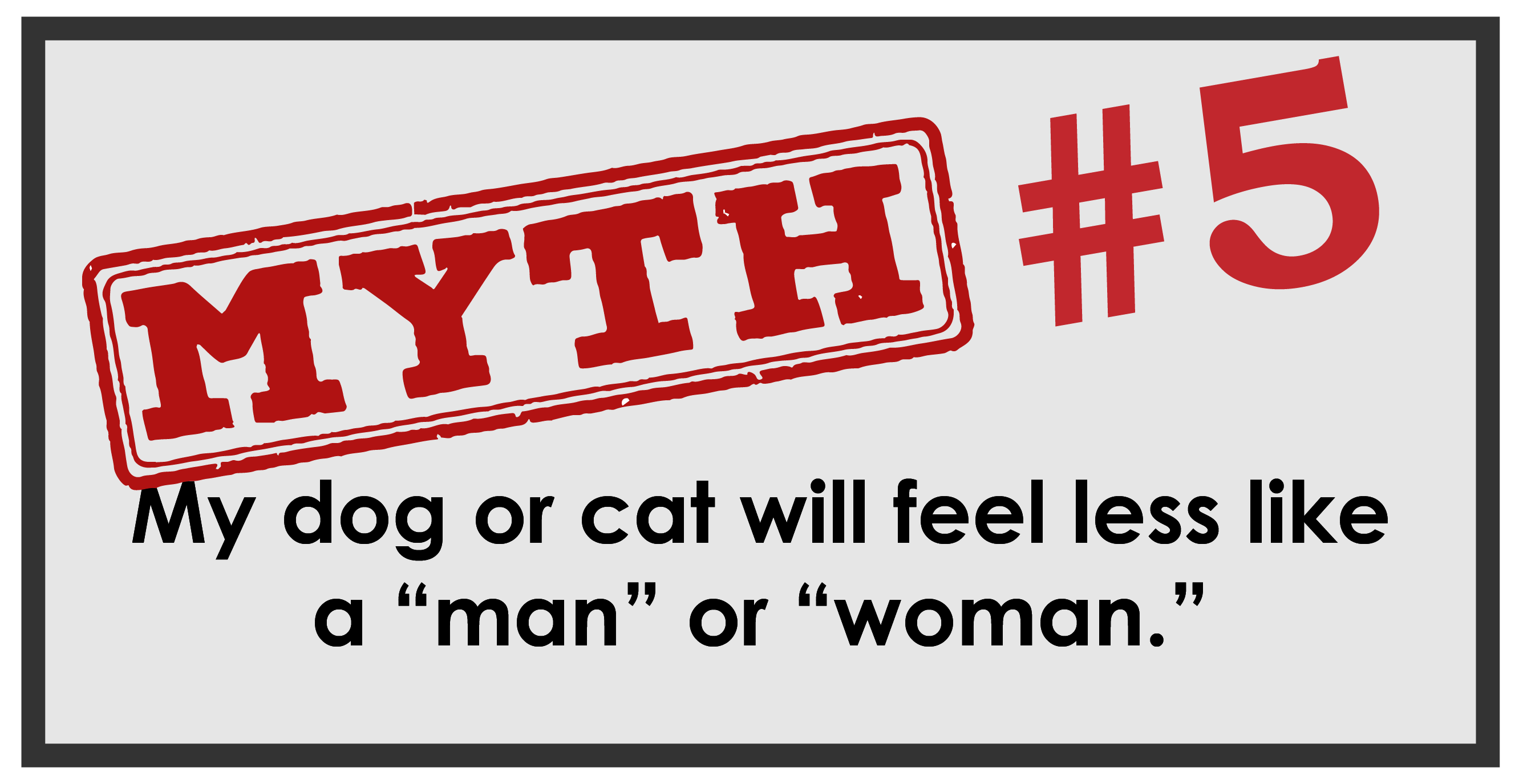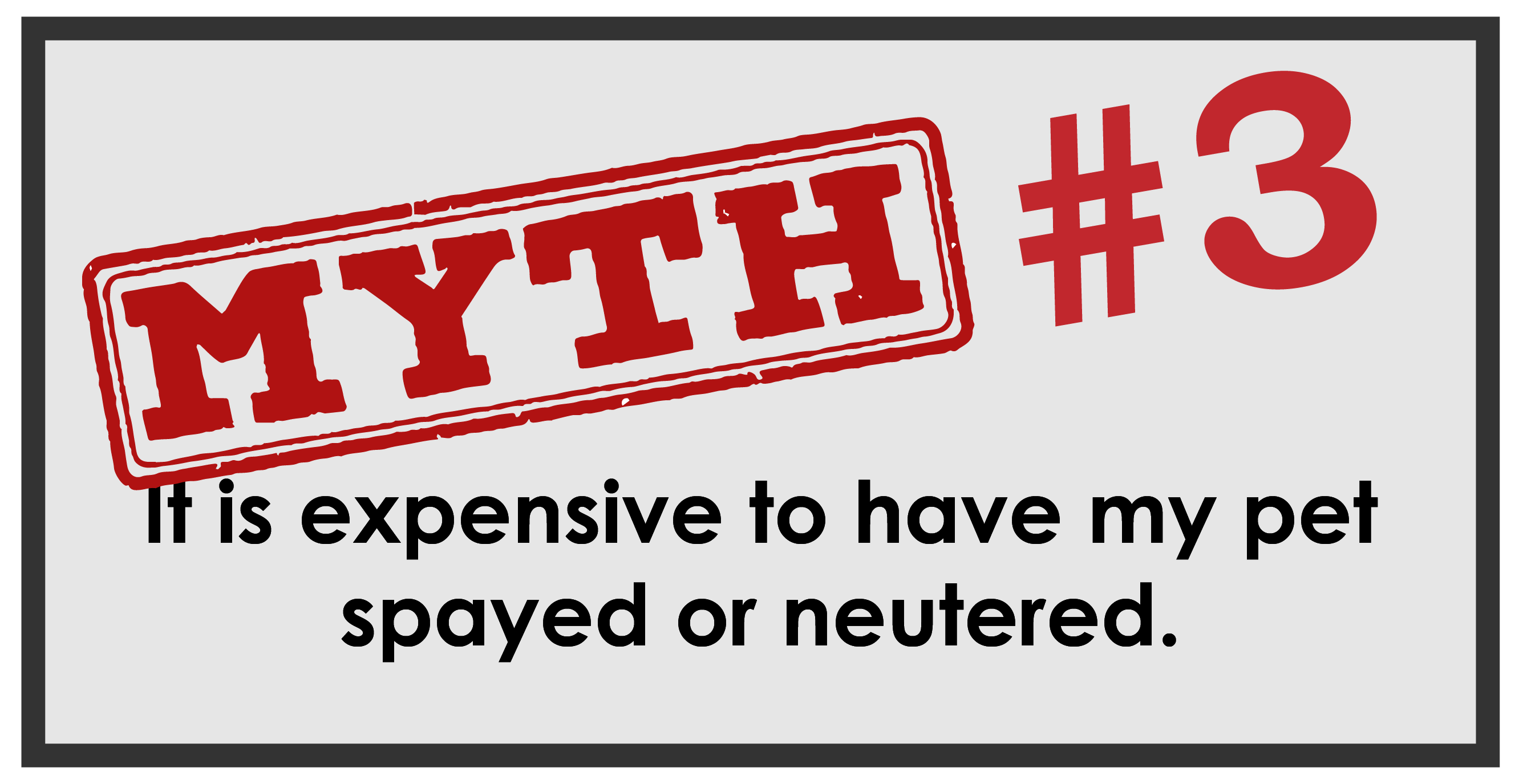17. Myth #17
16. Myth #16
15. Myth #15

14. Myth #14
13. Myth #13
12. Myth #12
Correct, behavior is affected, but in positive ways! Sterilizing your beloved pet can help them incredibly. Males left intact can roam for miles in search of a female in heat, but they tend to roam less if they are neutered and have no reason to look for a female. Altering your pet can also lower aggression towards other pets and the want to mark their territory.
11. Myth #11
Not true. Dogs reproduce solely to ensure the survival of their species. They do not raise a puppy for eighteen years. They do not dream of their puppy’s wedding. They do not hope for the comfort of grandchildren in their old age. Female dogs nurse for a few weeks, teach the puppies rules, boundaries, and limitations and send them off to join the pack. Male dogs are not “fathers” in the human sense of the word; they do not even recognize puppies as their own.
10. Myth #10
Dogs do not get fat simply by being sterilized. Just like humans, dogs gain weight if they eat too much and exercise too little or if they are genetically programmed to be overweight. The weight gain that people may witness after sterilization is most likely caused by continuing to feed a high energy diet to a dog that is reducing its need for energy as it reaches adult size.
9. Myth #9
If I had a nickel for every time someone brought me 3 puppies and told me they had found homes for 2 puppies in the litter, but they tried everything and couldn’t find homes for these last 3….well, I’d be retired and living on a beach.
And it is important to consider that while YOU may find a good home, it might not be a good home forever. You can’t control the decisions other people make once the pet is theirs. Your pet’s puppies or kittens, or their puppies or kittens, could end up in an animal shelter, as one of the many homeless pets in every community competing for a home. Will they be one of the lucky ones?
8. Myth #8
Many of us have a wonderful, obedient, beautiful pet, and we would want a hundred just like them. However, there is no guarantee that your pet’s offspring will act or look like their parents. That’s just not how genetics works. In fact, your pet’s puppies or kittens have an unlikely chance of being a carbon copy of your pet. Training your pet well – and keeping up with training – is the key to having a wonderful pet. You can find several breeds, including purebreds, that are well-mannered just like your dog and waiting at a shelter. You just have to look.
7. Myth #7
Pets actually don’t get lazy unless you allow them to. Your furry friends need consistent exercise to maintain their overall health before and after being altered. Pets become lazy due to a lack of exercise and over feeding, which can cause them to become obese. Therefore, keeping a well-maintained exercise schedule for your pet, whether it’s running or throwing a toy, you can keep your pet from becoming lazy.
6. Myth #6
Whether a dog is protective (or shy, or submissive, or would sooner lick an intruder and invite him in the house to play) is based mainly on genetics and environment. Sex hormones play little to no role. Additionally, a dog that is predisposed to protect home and family will be infinitely more willing to do so if he or she feels like they are part of the family “pack”. If anything, spaying or neutering your dog will make him less interested in roaming to look for a mate, thus focusing all his energy on pleasing you. AND, he won’t be out roaming if or when and intruder does come.
5. Myth #5
Medical research shows no reason to believe spayed or neutered animals are even aware of their physical change.
This myth stems from humans imposing their own feelings of loss on an animal. Dogs and cats do not have any concept of sexual identity, gender roles, or reproduction. Your pet has absolutely no understanding or emotional attachment to these issues. Don’t confuse human sexuality with animal instinct. Neutering will not change a pet’s basic personality. He doesn’t suffer any kind of emotional reaction or identity crisis when neutered.
In fact, you will be doing your pet a favor. Dogs and cats have need-based instincts. For example, when they are hungry, they find food. When they have an inch, they scratch it. If they are unaltered and have a drive to mate, then guess what? Male dogs can smell a female in heat up to 5 miles away. If they can smell a female but can’t get to her, then your pet can experience sexual frustration and high stress levels. A male dog will break down doors, jump fences, and engage in other dangerous and harmful behavior to get at a female. By altering your dog, you are giving him/her one less need to fulfill.
4. Myth #4
I understand wanting your kids to learn about life and the natural world. But isn’t the miracle of birth overshadowed by the knowledge of the thousands of animals that are homeless and unwanted? Isn’t bringing more puppies and kittens into that a little bit sad, and not a miracle?
Consider for a minute, explaining to your children that by allowing 8 more puppies to come into the world, you have caused 8 puppies somewhere else to be euthanized because the homes that were going to adopt the shelter puppies got your puppies instead. Where is the miracle in that? Would your kids appreciate your actions then?
Instead, why not teach children that all life is precious, and that the ones already born need saving. Explain to kids why spaying and neutering is important and promote adoption in your family.
3. Myth #3
A spay or neuter is a complex surgical procedure which requires trained professionals that have gone to school for much longer than any reasonable humane would want to, not to mention the drugs and specialized equipment involved. It should cost money. Having said that, pet over-population is a high-priority issue and many, many people have gotten together to figure out how to provide low-cost surgery options to the general public. In short, spaying or neutering your pet does not have not be expensive TO YOU.
Low-cost spay/neuter is more and more widely available all the time. Check out Petsmart Charities Low-Cost Spay/Neuter Finder to find an option in your area. If you live in Bourbon County, we have several resources for you to choose from. Spay/Neuter can be anywhere from $50 to free, depending on the case. Call PAWS at 859-988-9800 to work out the best option for you and your pet.
2. Myth #2
I’ll let you in on a little secret. About 1 in every four pets brought to animal shelters is a purebred. The latest count by the ASPCA reported that 1.2 million dog are euthanized in animal shelters in our country each year [ASPCA.org]. Yes, the chances of adoption are a little higher in some cases for purebred dogs, but not as much as you would think. So, if 25% of the 1.2 million animals that are euthanized are purebred, that is still 300,000 purebred dogs euthanized in shelters every year because they couldn’t find homes.
Every dog should be special in the eyes of its owner, but that is where the world’s value of your purebred ends. Your purebred is not the last of its kind, nor even the last ten thousandth. Ask any animal shelter worker their opinion of whether we need more purebred black labs in the world. There are too many dogs and cats – mixed breed and purebred – period.
1. Myth #1
Medical evidence indicates the exact opposite.
Research shows that females spayed before their first heat are typically healthier than those spayed later or not at all. Spaying a dog or cat eliminates the risk of uterine and ovarian cancer, and spaying before the first heat cycle greatly reduce (by 99% in dogs and 95% in cats) the chance of developing mammary cancer later in life [SpayFirst.org]. Most professional animal welfare groups have endorsed early-age spay/neuter including; American Animal Hospital Association (AAHA), American Society for the Prevention of Cruelty to Animals (ASPCA), American Humane Association (AHA), Cat Fanciers Association (CFA), American Kennel Club (AKC), and the Humane Society of the United States (HSUS), just to name a few.
There are additional benefits to spaying your female earlier rather than later. Remember how as a kid when you scrapped your knee, it seemed to heal super fast? That is because as a kid you were growing really fast too. Your body was making new cells all the time, leading to faster healing times than you experience as an adult. This same thing goes for healing after surgery. Your puppy will heal faster from a spay than your adult dog would. In addition, younger dogs and cats experience less blood loss during surgery and have far fewer post-operative complications. Spaying her before her first heat cycle, when she is still growing, is much better for her body than waiting until later.
Aside from the medical benefits, you shouldn’t let your dog have a litter before she is spayed because even one litter contributes to pet over-population. We don’t need more puppies in the world. By spaying as early as possible you are being a responsible pet owner by not adding more homeless pets.
For more great information regarding early-age spay/neuter, read this article by the ASPCA.

